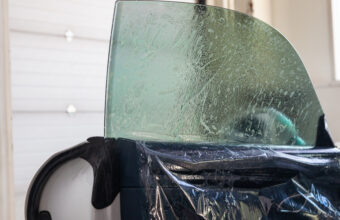Choosing the right window tint for your vehicle involves understanding the differences between the various types available, particularly distinguishing between ceramic and regular (dyed or metallic) tints. Ceramic tints offer superior performance in terms of heat rejection, UV protection, and durability, but how can you tell if your window tint is ceramic or regular? Let’s dive into the key indicators that can help you make this distinction.
Heat Resistance
One of the most significant advantages of ceramic tint over regular tint is its ability to block infrared rays, reducing heat buildup inside the car.
- Test – On a sunny day, place your hand close to the window interior. If the tint significantly reduces the heat you feel, it’s likely ceramic. Ceramic tints can block up to 90% of infrared rays, offering noticeable heat reduction compared to regular tints.
Durability and Fading
Ceramic tints are known for their exceptional durability and resistance to fading over time.
- Visual Inspection – Regular tints might show signs of fading or color change (often to a purple hue) as they age, due to the dyes used. Ceramic tints, on the other hand, maintain their color and clarity much longer because they do not contain dyes.
Clarity and Signal Interference
The materials used in ceramic and regular tints also affect visibility and electronic signal transmission.
- Clarity – Ceramic tints generally provide better visibility, especially at night, because they don’t contain metals or dyes that can slightly distort or reduce visibility.
- Signal Interference – If you experience no interference with GPS, mobile phones, or radio signals, your tint is likely ceramic. Metallic tints can interfere with electronic signals, whereas ceramic tints do not.
Cost and Installation Records
Reflecting on the cost and installation process can also provide clues.
- Cost – Ceramic tints are typically more expensive than regular tints. If you recall paying a premium for your window tint, it’s likely ceramic.
- Installation Records – Check your installation receipts or records. Most reputable installers will specify the type of tint used. If it mentions ceramic properties or specifically labels it as a “ceramic tint,” that’s a clear indication.
Appearance and Feel
The appearance and tactile feel of the tint can offer additional hints.
- Appearance – Ceramic tints have a slightly different sheen compared to regular tints, often looking more matte and less reflective.
- Feel – Though not always a definitive test, ceramic tints can feel slightly thicker or more substantial to the touch compared to regular tints due to the density of the ceramic particles used.
Distinguishing between ceramic and regular window tint involves assessing heat resistance, durability, clarity, potential signal interference, cost, and appearance. Ceramic tints stand out for their superior heat rejection, durability, and non-interfering nature with electronic devices, justifying their higher cost. If you’re still uncertain about the type of tint on your vehicle, consulting with a professional tint installer can provide you with a definitive answer. Understanding the type of tint you have is crucial for maintenance and can influence your choice for future tinting needs.






